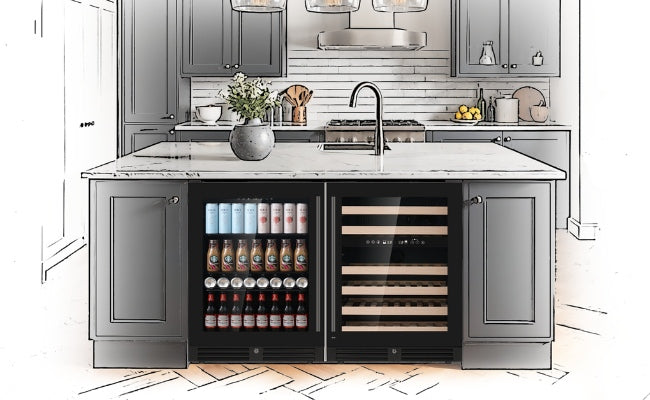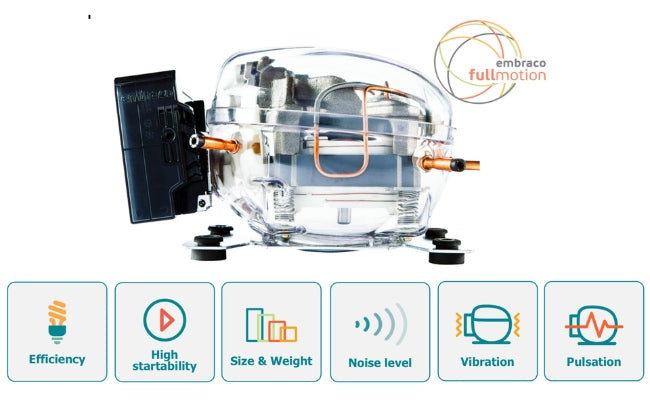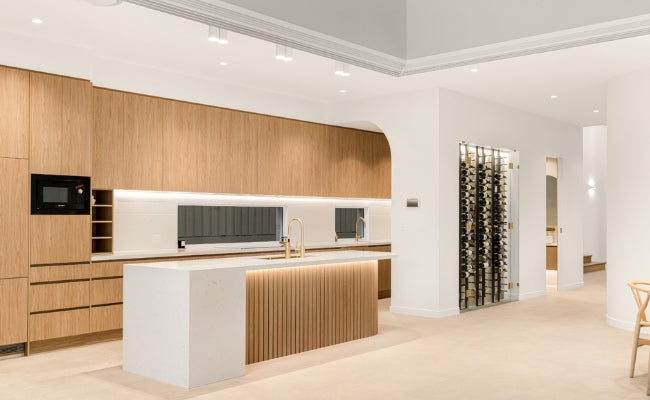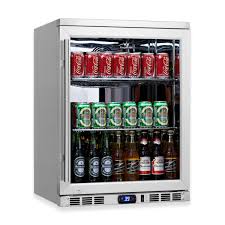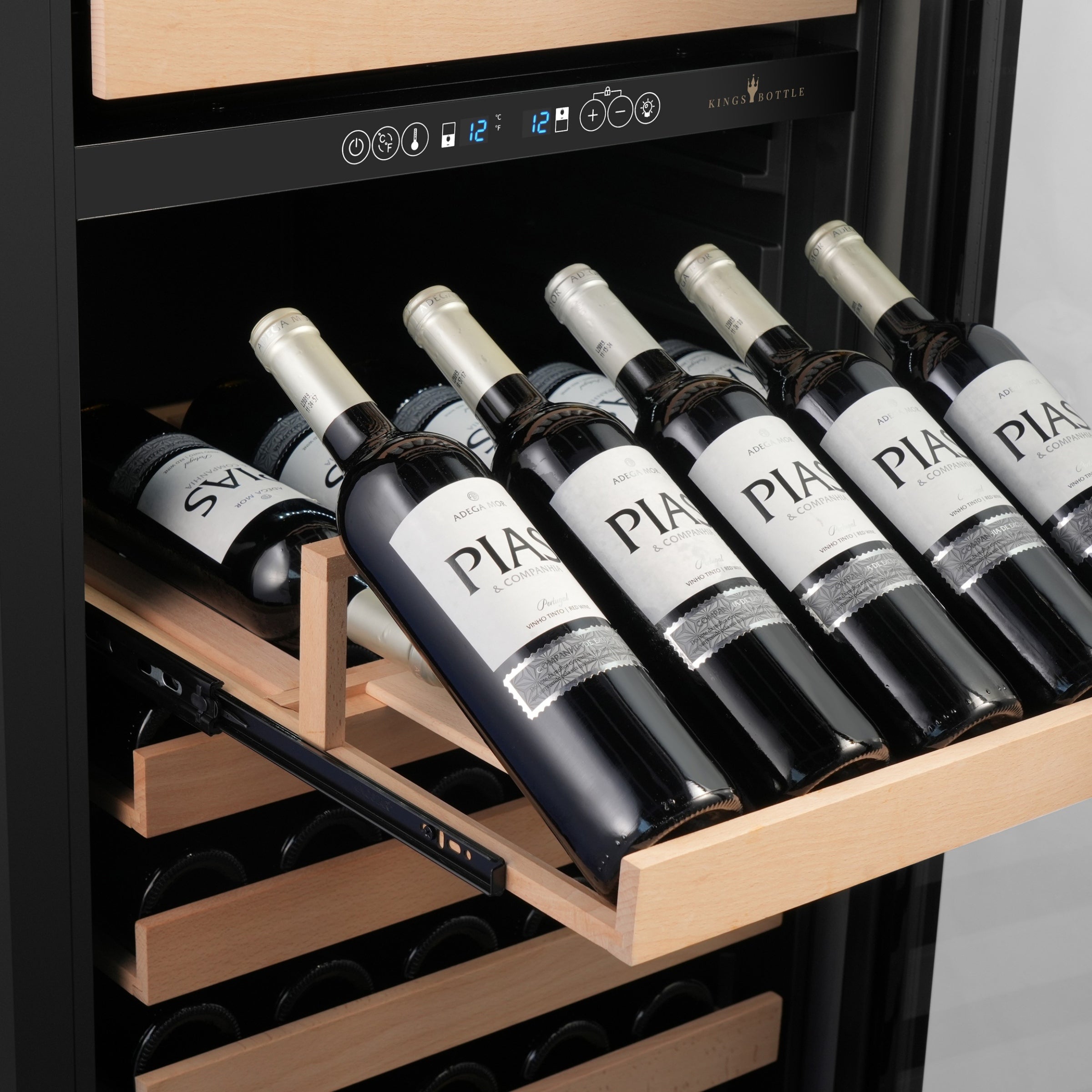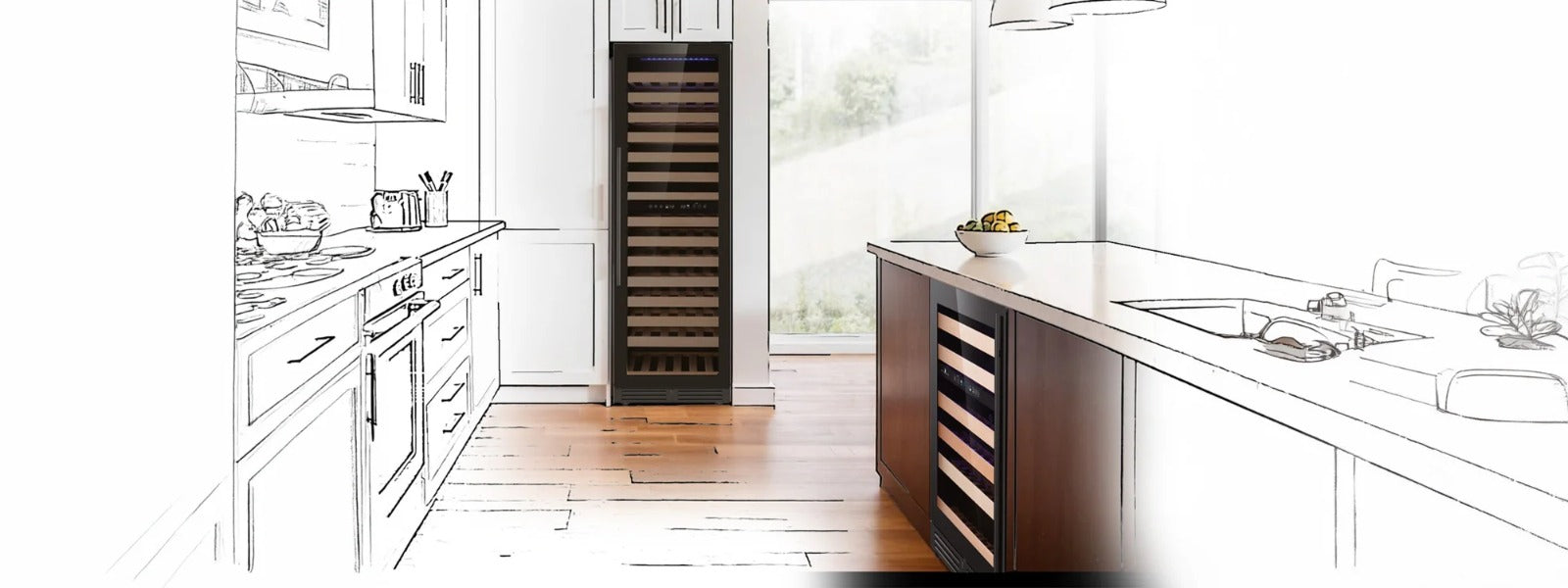
Wine Fridge Maintenance: 7 Simple Steps to Keep Your Unit Running Smoothly
A wine fridge is not just a luxury, it's an investment in preserving the quality and flavor of your wine. However, like any other appliance, a wine fridge requires regular maintenance to perform efficiently and keep your precious collection safe. Proper upkeep not only prolongs the lifespan of your unit but also ensures your wine is stored in the perfect conditions.
In this blog, we’ll break down 7 simple steps to help you maintain your wine fridge and keep it running smoothly for years to come. Whether you’re a casual wine enthusiast or a serious collector, these maintenance tips will help protect your investment.
Why Is Wine Fridge Maintenance Important?
Before delving into the steps, let’s understand why maintaining your wine fridge is critical:
-
Optimal Wine Storage: Proper maintenance ensures your wine fridge consistently maintains the ideal temperature and humidity levels, which are key to preserving wine quality.
-
Energy Efficiency: A well-maintained fridge consumes less energy, saving you money on utility bills.
-
Longevity: Regular care prevents wear and tear, increasing the lifespan of your wine fridge.
-
Mold and Odor Prevention: Maintenance helps eliminate mold growth and unpleasant odors that can accumulate over time.
Step 1: Clean the Interior Regularly
Cleaning the interior of your wine fridge is essential to prevent the buildup of dust, debris, and mold. Here’s how to do it:
What You'll Need:
-
Mild soap or a gentle cleaning solution
-
Soft cloth or sponge
-
Dry, lint-free cloth
How to Clean the Interior:
-
Power Off the Fridge: Before cleaning, unplug your wine fridge to prevent any electrical hazards.
-
Remove Shelves and Drawers: Take out all removable parts, including shelves and racks, and wash them separately with warm, soapy water.
-
Wipe the Interior: Use a soft cloth or sponge dampened with mild soap to clean the interior walls and floor. Avoid harsh chemicals that could damage the fridge.
-
Dry Thoroughly: Use a lint-free cloth to dry the inside completely before reinstalling the shelves.
-
Reinstall Components: Once everything is dry, put the shelves and racks back in place.
How Often:Clean the interior every 2-3 months to maintain hygiene and prevent odors.
Step 2: Dust the Exterior and Vents
The exterior of your wine fridge and its ventilation system play a crucial role in ensuring smooth operation. Dust and debris can accumulate over time, obstructing airflow and affecting cooling efficiency.
How to Dust Your Wine Fridge:
-
Turn Off the Unit: Always power off the fridge before cleaning the exterior.
-
Focus on Vents and Coils: Use a soft brush or handheld vacuum to clean dust from the vents and coils at the back or bottom of the unit. Clogged vents can overheat the compressor and reduce cooling efficiency.
-
Clean the Surface: Wipe the exterior with a soft, damp cloth to maintain its appearance.
How Often:Dust the vents and exterior every month, particularly if your wine fridge is in a dusty environment or near the kitchen.
Step 3: Check and Maintain the Door Seals
The door seals, or gaskets, ensure a tight seal to keep the cool air inside the fridge. Worn or damaged seals can cause temperature fluctuations and reduce energy efficiency.
How to Check the Seals:
-
Inspect for Cracks or Tears: Visually inspect the gaskets for any signs of wear, such as cracks, tears, or looseness.
-
Perform the Paper Test: Place a piece of paper or a dollar bill halfway into the door and close it. If the paper slips out easily, the seal isn’t tight enough.
How to Clean and Maintain the Seals:
-
Clean the gaskets every few months using a soft cloth and a mild soap solution to remove dirt or stickiness.
-
If the seals are damaged, replace them promptly to maintain the fridge's efficiency.
How Often:Inspect and clean door seals every 2-3 months.
Step 4: Monitor the Temperature and Humidity
Wine fridges are designed to maintain specific temperature and humidity levels that are critical for preserving wine. Even a small fluctuation can impact the taste and quality of your collection.
Ideal Ranges:
-
Temperature: 45°F–65°F (7°C–18°C), with 55°F (13°C) being the sweet spot for most wines.
-
Humidity: 50%–70% to keep corks moist and prevent oxidation.
How to Monitor Conditions:
-
Use a built-in thermostat to set and regularly check the temperature.
-
Invest in a hygrometer to monitor humidity levels if your fridge doesn’t have one.
Signs of Problems:
-
Temperature fluctuations or an inability to cool may indicate a malfunctioning compressor or thermostat.
-
If humidity is too low, you can place a shallow dish of water inside the fridge to increase moisture levels.
How Often:Check temperature and humidity levels weekly to ensure consistency.
Step 5: Defrost the Fridge (If Necessary)
Ice buildup in the wine fridge can reduce cooling efficiency and airflow, particularly in models that aren’t frost-free.
How to Defrost Your Wine Fridge:
-
Power Off the Unit: Unplug the fridge to begin the defrosting process.
-
Empty the Contents: Safely remove all wine bottles and store them in a cool, dark place during defrosting.
-
Allow Ice to Melt: Leave the fridge door open and let the ice melt naturally. Use towels to soak up any melted water.
-
Dry the Interior: Wipe down the interior surfaces with a clean, dry cloth once the ice has fully melted.
-
Restart the Fridge: Plug the unit back in, allow it to stabilize for a few hours, and then restock your wine.
How Often:Defrost your fridge once or twice a year, depending on the level of frost buildup.
Step 6: Avoid Overloading the Fridge
Overloading your wine fridge can obstruct airflow and hinder its ability to maintain consistent temperatures. Proper spacing between bottles is essential to allow air circulation and evenly distributed cooling.
Tips for Proper Loading:
-
Don’t Overfill: Only store as many bottles as the fridge is designed to hold.
-
Leave Space: Ensure there’s at least some space between the bottles and the walls of the fridge.
-
Organize by Type: Group reds, whites, and sparkling wines to make retrieval easier and minimize door openings.
How Often:Regularly reorganize your wine fridge, especially if you’re frequently adding or removing bottles.
Step 7: Schedule Professional Servicing
While DIY maintenance is essential, scheduling professional servicing every 1-2 years ensures your wine fridge is checked for issues you may not notice. Technicians can address:
-
Compressor efficiency.
-
Electrical problems.
-
Cooling system malfunctions.
Professional servicing can help identify and fix small issues before they become costly repairs.
Additional Tips for Wine Fridge Maintenance
-
Positioning Matters: Ensure your wine fridge is installed in a well-ventilated area away from direct sunlight or heat sources.
-
Surge Protectors: Use a surge protector to safeguard the appliance against electrical damage.
-
Don’t Leave the Door Open: Avoid leaving the fridge door open for extended periods, as this disrupts temperature and humidity consistency.
-
Use Compatible Cleaners: Avoid abrasive materials or harsh chemicals that can damage the fridge’s interior surfaces.
Common Mistakes to Avoid
Even with good intentions, improper practices can compromise your wine fridge. Avoid these common mistakes:
-
Using It as a Regular Fridge: Wine fridges are designed for beverages, not for storing leftovers or heavy food items that may cause odors.
-
Ignoring Performance Issues: If you notice inconsistent cooling or ice buildup, address the issue immediately to prevent further damage.
-
Neglecting Regular Maintenance: Skipping routine cleaning or inspections can reduce efficiency and shorten the lifespan of your fridge.
Your wine deserves the best care, and a well-maintained wine fridge is the key to enjoying every bottle at its finest. So set aside some time for upkeep, and toast to the longevity of both your wine and your fridge!

